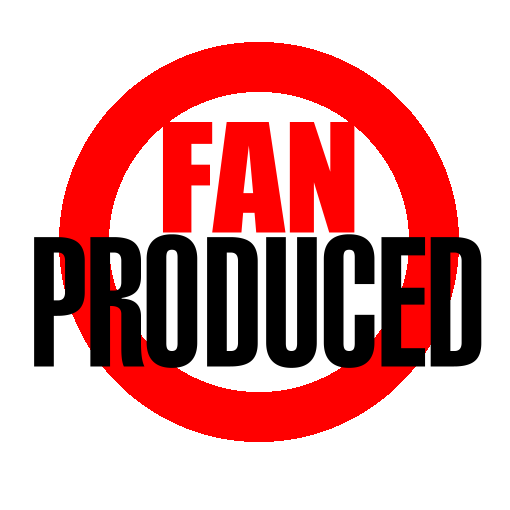 I am by no means an expert at being the head of a production but I base my ideas regarding the group dynamics of project management on Larry Nemecek's management style when I worked with him on SciFi Studios Magazine, which I call the "Conductor" approach...
I am by no means an expert at being the head of a production but I base my ideas regarding the group dynamics of project management on Larry Nemecek's management style when I worked with him on SciFi Studios Magazine, which I call the "Conductor" approach...When people go to an orchestral recital they go for the experience of listening to an orchestra. They don't go to listen to the piano, the brass section or the clarinet player, they go to listen to the whole orchestra. This means that the orchestra has to perform as a group - they have to be in time and in tune. As the brass fades out, the strings fade in with the percussion giving a subliminal beat to it all. If one section of the orchestra is bad then the whole production suffers. If the percussion is out of time or the piano out of tune, then no matter how good the strings are, the recital will get bad reviews.
The conductor doesn't just wave his baton to keep them all in time - watch him next time. You'll see him point to the lead violinist when it is time for him to start, he'll wave in the cellos when they have to come to the fore and punch a fist to the base drummer when he has to give a roll of thunder. During a practise if any of the sections or players doesn't follow his direction, he'll stop the orchestra, talk to them, maybe get them to run through their section and they will re-start. He'll work with the individual sections and with individual players as required.
This goes beyond talking about the interaction of people in a project, you can include all the resources of a project in this analogy! Imagine that the strings are the visual aspects of the production, the wind might be the audio, the brass is the promotion and the percussion the content, for example the script. Just as the conductor chooses the members of his orchestra, the producer of an animation will choose his animators, his promotional agent, script-writer and voice actors. These are the manpower resources of the project, to which are added the infrastructure resources such as software, special effects, music, etc.
Once chosen the conductor's or producer's job is to maximise the efficiency of every aspect the "orchestra". In the case of infrastructure the responsibility for their efficient use lies with the production staff who use them, for argument's sake we'll say the producer, but for manpower resources - people - he has to work *with* them to encourage them to produce their best. This might require him to give direction sometimes, as in "Jenny, your character is a Klingon warrior - I need more raspy, gutteral lower registers." However he CANNOT do the performance himself, all he can do is help and encourage the performer. Your pianist might be the best in the country, but in the context of this production, he takes his direction from the conductor.
I can't stress that highly enough. The conductor can't play every instrument because frankly that's not his purpose. He's there to lead the whole orchestra to encourage them to give their very best in the performance, to act as quality control by giving them feedback on what they are doing and to give them direction to perform their role in this particular performance. Just as a musician auditions for a spot in an orchestra, a voice actor auditions for a spot in an audio drama and a writer will pitch their story for inclusion in your anthology. They sign on because they want the gig, because they want to perform Bach or Beethoven, it might be because they want to expand their creative horizons, or, if they are a professional, because they want the money. They want to give their best, if they are a pro it might be because they have to protect their reputation, as an amateur its because of the like to play their instrument, they enjoy being part of an orchestra and they want to "push the envelope" creatively.
Performers perform, actors act. This is in their nature, this is what you sign them on board to do. To sign them on and then not allow them to act, to control the lift of every eyebrow, flies in the face of reason. If you want this kind of control then you need to think very seriously about whether you want your project to be a group production or a one-man-show. This is a viable option - Geoff James' Borg Wars is the perfect example - but it is more labour intensive, slower and, unless you are a Renaissance man, there is a very real possibility that an aspect that you are weak in will drag your production down unfairly.
If you choose to make your project into a group endeavor then you are still the prime-mover for the production but you have to learn to delegate work without micro-managing. Give direction and quality control to keep all the individual parts of the production, the performers in the orchestra, working together to deliver the best possible result, but allow the individuals involved to give creative input, respect what they do and give them credit for it on the night.
When I publish a magazine, I work with the individual artists and authors to get them to deliver their very best. If an artist is doing the cover art for a story, I have to make sure the two match - a line art of Kirk in the foreground with Spock looking on will be totally inappropriate for a story which is all about Spock and where Kirk only has a walk-on part. However I can't control the pen that does the sketch, the airbrush that gives it colour or the mind that writes the story, all of these things have far more to do with the success of the 'zine than my editorial direction.
When I write scripts for an audio drama, I'll add a single word to a line of delivery to show how I want the line delivered: angrily, slyly, sneeringly, whispered, with awe, testily. I might give more detailed direction when I hand the lines out: "try to exude strength of character even though totally exhausted" was one I gave one time and astonishingly the VA gave me exactly what I wanted! In fact she added something to it that I had never considered and thus made it that much better! Your cast and crew will deliver more if they are encouraged than if they are ordered.
So whether you are shooting a film, publishing a newsletter or coaching a football team always keep in mind that you are part of a team and that your contribution is simply to keep the group's overall performance on track for achieving your goals by encouraging all the individuals involved to deliver their part to the best of their ability.
They might throw roses at your feet but you have to share every bouquet with your ensemble.



